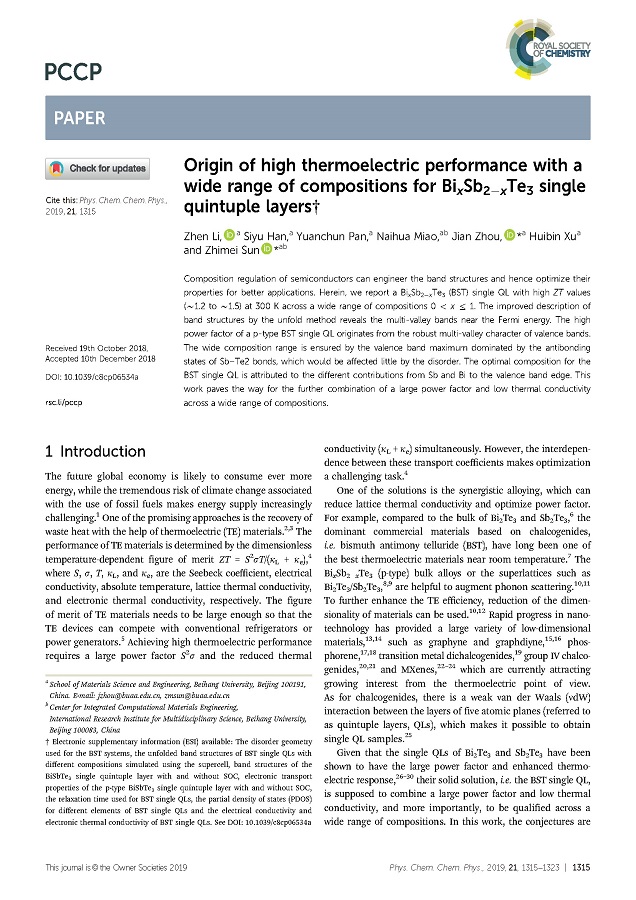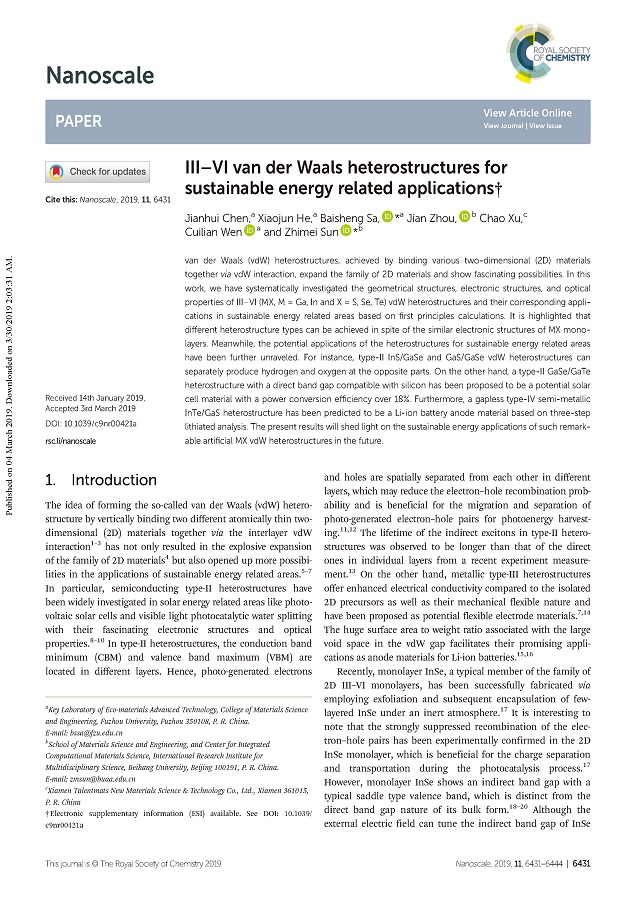
Composition regulation of semiconductors can engineer the band structures and hence optimize their properties for better applications. Herein, we report a BixSb2-xTe3 (BST) single QL with high ZT values (~1.2 to ~1.5) at 300 K across a wide range of compositions 0 < x <= 1. The improved description of band structures by the unfold method reveals the multi-valley bands near the Fermi energy. The high power factor of a p-type BST single QL originates from the robust multi-valley character of valence bands. The wide composition range is ensured by the valence band maximum dominated by the antibonding states of Sb-Te2 bonds, which would be affected little by the disorder. The optimal composition for the BST single QL is attributed to the different contributions from Sb and Bi to the valence band edge. This work paves the way for the further combination of a large power factor and low thermal conductivity across a wide range of compositions
Li Z, Han S, Pan Y, et al. Origin of high thermoelectric performance with a wide range of compositions for Bi x Sb 2− x Te 3 single quintuple layers[J]. Physical Chemistry Chemical Physics, 2019, 21(3): 1315-1323.
No.1

van der Waals (vdW) heterostructures, achieved by binding various two-dimensional (2D) materials together via vdW interaction, expand the family of 2D materials and show fascinating possibilities. In this work, we have systematically investigated the geometrical structures, electronic structures, and optical properties of III–VI (MX, M = Ga, In and X = S, Se, Te) vdW heterostructures and their corresponding applications in sustainable energy related areas based on first principles calculations. It is highlighted that different heterostructure types can be achieved in spite of the similar electronic structures of MX monolayers.Meanwhile, the potential applications of the heterostructures for sustainable energy related areas have been further unraveled. For instance, type-II InS/GaSe and GaS/GaSe vdW heterostructures can separately produce hydrogen and oxygen at the opposite parts. On the other hand, a type-II GaSe/GaTe heterostructure with a direct band gap compatible with silicon has been proposed to be a potential solar cell material with a power conversion efficiency over 18%. Furthermore, a gapless type-IV semi-metallic InTe/GaS heterostructure has been predicted to be a Li-ion battery anode material based on three-step lithiated analysis. The present results will shed light on the sustainable energy applications of such remarkable artificial MX vdW heterostructures in the future.
Chen J, He X, Sa B, et al. III–VI van der Waals heterostructures for sustainable energy related applications[J]. Nanoscale, 2019, 11(13): 6431-6444.